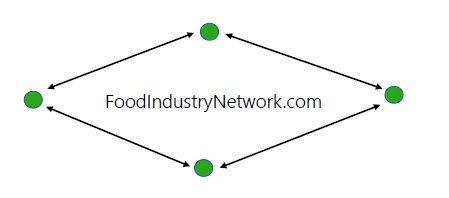PepsiCo meets saturated fat reduction goal 4 years early

Dive Brief:
- PepsiCo reached its saturated fat reduction goal of having 75% of its convenient foods portfolio not exceed 1.1 grams per 100 calories in 2021, four years ahead of schedule, the beverage and snacks maker said in a statement.
- The beverage and snack giant said 53% of its beverage portfolio volume now has fewer than 100 Calories from added sugars per 12-ounce serving — its 2025 global goal is at least two-thirds at 100 or less. And 66% of its convenient foods portfolio volume does not exceed 1.3 milligrams of sodium per calorie. Its 2025 target worldwide for salt is at least 75%.
- As consumers place a larger focus on sustainability and eating healthier, pressure is on CPGs to make improvements to their businesses and portfolios while providing evidence that they are following through on their commitments.
Dive Insight:
As consumers look to eat healthier, a trend further accelerated by the ongoing pandemic, food and beverage makers have been working for years to overhaul their portfolios.
In 2016, PepsiCo, whose convenient foods portfolio includes household staples such as Lay’s, Doritos and Cheetos, outlined a number of health initiatives it would undertake by 2025, including in the reduction of added sugars, saturated fat and sodium levels.
In recent years, PepsiCo’s Frito-Lay has introduced healthier versions of its popular brands with less of these attributes in them. The fact that PepsiCo achieved the saturated fat target ahead of schedule likely reflects that consumers especially valued this, or that the company was able to achieve it more easily than some of its other targets.
Even as PepsiCo is responding to consumers’ health concerns by reformulating its products, it is also trying to address their interest in more sustainably run businesses.
PepsiCo noted advancements in regenerative agriculture and improvements it has made in operational water-use efficiency in high water-risk areas. Despite these inroads, PepsiCo conceded that increased demand for snacks has created some challenges when it comes to curtailing emissions from its supply and value chain.
The CPG giant also said it has reduced direct (scope 1) and indirect emissions from its energy sources (scope 2) [by 25%] from a 2015 baseline, with more than 70% of its global electricity needs in direct operations now met by renewable sources. Scope 3 emissions — which account for 93% of the company’s emissions — increased by 5% from the baseline, due to “unprecedented business growth.” Scope 3 is generally defined as indirect emissions from across a company’s supply and value chain.
So-called Scope 3 emissions are responsible for the lion’s share of a company’s emissions, and PepsiCo is no exception. With businesses depending on numerous other players for ingredients, shipping and packaging, as well as for how consumers use their products, CPGs can only go so far internally.
“There is still much more work to be done and we cannot do it alone, so we — in partnership with our value chain partners, communities, NGOs and government leaders — will continue investing in action, innovation and partnerships that enable us all to realize a more sustainable future,” Jim Andrew, PepsiCo’s chief sustainability officer, said in a statement.
Source: fooddive.com

